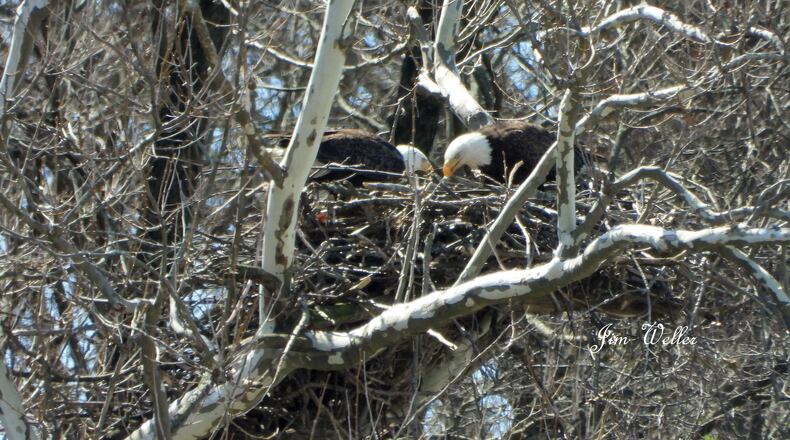“We think there’s two,” he said, because both eagles in the nest at the same time appeared to be feeding a different eaglet. “We won’t know until they’re a little bigger and able to look out over the nest at us.”
It likely will be a week or two before an eaglet that age would be strong enough to climb to the edge of the nest, he said. Naming won’t happen until they are sure how many names will be needed. The eaglets each year have been given aviation-themed names.
Orv and Willa had been expanding on their nest since their first brood at Carillon in 2018. The eagles built a nest in a towering sycamore tree behind Wright Hall, home of the 1905 Wright Flyer III.
Earlier this year, they lost a newly laid egg, and their nest, when it blew down during a February windstorm. The loss of their nest put the arrival of eaglets this year into doubt, but Weller said the loss happened early enough in the season and their instinctive drive was still strong to produce young.
“They took one week to rebuild a nest one-third the size and laid the eggs,” he said.
Of the nine eaglets that Orv and Willa have parented together since 2018, Weller said six have survived.
Orv and Willa are part of a resurgence of bald eagles.
The Ohio Department of Natural Resources Division of Wildlife last month reported there were at least 806 bald eagle nests in the state, according to the latest census. This represents a 14% increase from the 707 bald eagle nests documented in Ohio in 2020, and a 187% increase from 2012, the year the bald eagle was removed from Ohio’s list of threatened and endangered species.
To be successful, eagles need three things, Weller said — a high tree with good visibility, a river or lake for a food source, and somewhere hopefully isolated from human activity.
The bald eagle — the national bird of the U.S. since 1782 — was once an endangered species with only four nesting pairs in Ohio in 1979.
About the Author

